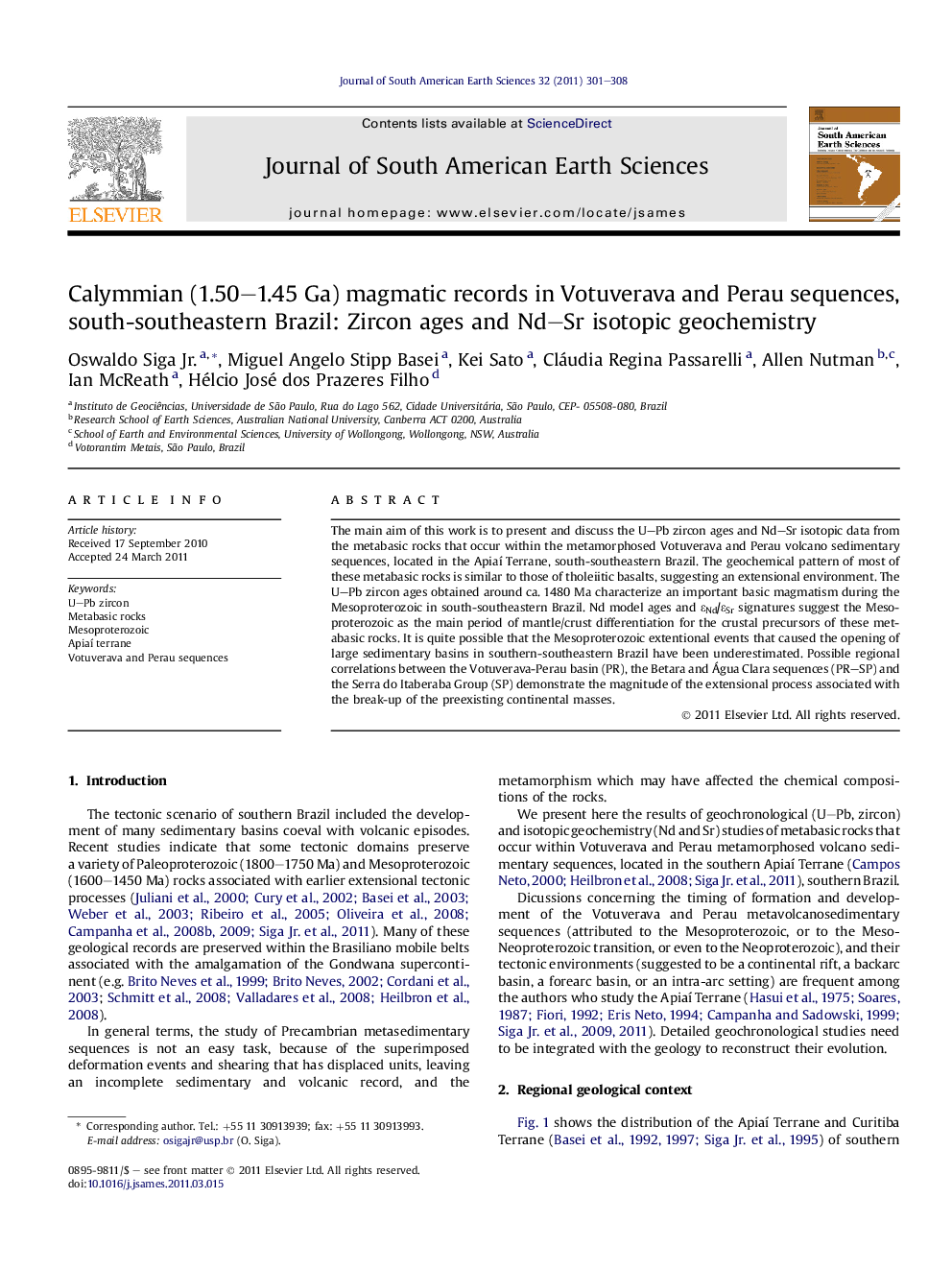| Article ID | Journal | Published Year | Pages | File Type |
|---|---|---|---|---|
| 4682591 | Journal of South American Earth Sciences | 2011 | 8 Pages |
The main aim of this work is to present and discuss the U–Pb zircon ages and Nd–Sr isotopic data from the metabasic rocks that occur within the metamorphosed Votuverava and Perau volcano sedimentary sequences, located in the Apiaí Terrane, south-southeastern Brazil. The geochemical pattern of most of these metabasic rocks is similar to those of tholeiitic basalts, suggesting an extensional environment. The U–Pb zircon ages obtained around ca. 1480 Ma characterize an important basic magmatism during the Mesoproterozoic in south-southeastern Brazil. Nd model ages and ɛNd/ɛSr signatures suggest the Mesoproterozoic as the main period of mantle/crust differentiation for the crustal precursors of these metabasic rocks. It is quite possible that the Mesoproterozoic extentional events that caused the opening of large sedimentary basins in southern-southeastern Brazil have been underestimated. Possible regional correlations between the Votuverava-Perau basin (PR), the Betara and Água Clara sequences (PR–SP) and the Serra do Itaberaba Group (SP) demonstrate the magnitude of the extensional process associated with the break-up of the preexisting continental masses.
► Early Mesoproterozoic U-Pb zircon ages around ca. 1480 Ma characterize the important basic magmatism in the Apiaí Terrane, southern Brazil. ► The Nd and Sr signatures suggests that the basic rocks were formed from Mesoproterozoic juvenile material. ►Is possible that the Mesoproterozoic extentional events that caused the opening of largesedimentary basins in southern Brazil are underestimated. ► Regional correlations can provide the magnitude of the extentional process associated with the break-up of the preexisting continental masses.
